- عنوان کتاب: The Nuclear Club / How America and the World Policed the Atom from Hiroshima to Vietnam
- نویسنده: Jonathan R. Hunt
- حوزه: هسته ای
- سال انتشار: 2022
- تعداد صفحه: 378
- زبان اصلی: انگلیسی
- نوع فایل: pdf
- حجم فایل: 45.3 مگابایت
رابطه بین جنگ ویتنام و تسلیحات هستهای در ذهن والت روستو بود، هنگامی که او در کلاس کالج جنگ ملی در سال 1968 در زیر آسمانی بدون ابر در واشنگتن دی سی سخنرانی کرد. در حالی که در آن سوی مرکز خرید ملی، کاخ سفید رئیس جمهور لیندون جانسون تیتر اخبار را در صبح روز هضم میکرد. 8 مه – پیروزی رابرت کندی در حملات خمپارهای مقدماتی دموکراتیک و جبهه آزادیبخش ملی ایندیانا در سایگون – روستو افق فراتر از رودخانه آناکوستیا را از فورت لزلی جی. مکنیر بررسی کرد. او از افسران فارغ التحصیل در یونیفورم لباسشان تا کی پرسید تا اینکه «آلمان، ژاپن، ایتالیا، هند و دیگران» بمب اتم را ساختند؟ معاهده منع گسترش سلاحهای هستهای (NPT) که سازمان ملل در نیویورک درباره آن بحث میکرد، قربانیهای بالاتری نسبت به سازمان پیمان آتلانتیک شمالی (ناتو) یا اتحاد برای پیشرفت در آمریکای لاتین خواهد کرد. ایالات متحده صرفاً “سهم لازم را در یک تلاش جمعی” به عهده گرفته بود. برای رای دهندگان عادی آمریکایی یا رهبران خارجی که از وضعیت درجه دوم یا سوم هراس دارند، وزارت خارجه ایالات متحده این توافق را به عنوان جانشین طبیعی معاهده 1963 منع آزمایش های تسلیحات هسته ای در جو، فضا و زیر آب اعلام کرده بود. “یعنی تمرین تنش زدایی ایالات متحده و شوروی، یک کار خوب در دنیای شیطان.” در حقیقت، رهبران ایالات متحده و همتایان اتحاد جماهیر شوروی آنها در توقف «توسعه بالقوه قدرت در مهمترین نقطهاش» علاقه قانعکنندهای داشتند. این نظم نوین جهانی، بیش از هر چیز، مستلزم اشتهای ثابت برای ماجراجویی های خارج از کشور است تا قانون مشترک عصر هسته ای را بر توده های سرکش جهان اجرا کند. بنابراین، مذاکرات معاهده تغییری ظریف اما مهم را در نحوه اداره جهان با کمک لژیونرهای دوردست ایالات متحده نشان داد، زیرا روستو و جانسون آماده میشدند تا کشور را در “مسئولیت خود در جهان قفل کنند – درست در اطراف چین کمونیست و شوروی”. اتحادیه، در سخت ترین مسائل.»2 در حالی که روستو پیروزی در ویتنام را به یک جنگ صلیبی بی پایان علیه اتم فراری مرتبط می کرد، کمیته اول سازمان ملل در محله تونی میان شهر منهتن در خلیج لاک پشت تشکیل جلسه می داد. در طول هشت اجلاس عمومی اول، تقسیمبندیهای واضحی در این مجموعه گسترده آشکار شد، جایی که نمایندگان کشورهای در حال توسعه با آنهایی که در بازارهای هستهای جهان پیشتاز بودند، روبرو شدند. در 16 می، آلفونسو گارسیا روبلز، معاون وزیر امور خارجه مکزیک، بازنگری جراحی در NPT را مطرح کرد که به تازه واردان اتمی کمک می کند تا با کشورهای صنعتی تر پیش بروند. او برای رسیدن به نقطه نظرات خود، توافق جدید را با معاهده منع تسلیحات هستهای در آمریکای لاتین، که پس از میدان آزتک در مکزیکوسیتی که در سال گذشته نهایی شده بود، به عنوان معاهده تلاتلولکو شناخته میشود، مقایسه کرد. ویژگیهای آن «بسیار برتر از پیشنویس پیشروی ما» بود. برای اینکه NPT اکثریتی را در مجمع عمومی سازمان ملل متحد (UNGA) به دست آورد، جایی که هیئتهای آمریکای لاتین و آفریقا از سال 1965 از سلطه عددی برخوردار بودند، گارسیا روبلز مخاطبان خود را به چالش کشید. مقدمه و مقالات آن را تجدید نظر کنید تا بیشتر شبیه آنچه در معاهده تلاتلولکو باشد. پس از جنگ جهانی دوم، جامعه جهانی متشکل از سیاستمداران، فعالان، بوروکراتها، دانشمندان و دیپلماتها یک رژیم تقریباً جهانی برای مدیریت قویترین فناوری ابداع شده ایجاد کردند – قدرت شکافتن یا ترکیب هستههای اتمی برای انتشار ایزوتوپهای جدید شگفتانگیز برای پزشکی. درمان و تولید انرژی یا نیروی انفجاری بی سابقه برای کشتار جمعی و مرگ. پس از شروع های نادرست متعدد، کمپین آنها در دهه 1960 به ثمر نشست، زمانی که چند برابر شدن بحران های منطقه ای و یک بازار جهانی در حال ظهور در راکتورهای شکافت، جامعه بین المللی را در تنگنای استعمارزدایی سوق داد تا یک Magna Carta برای قلمرو زیراتمی تهیه کند.
The relationship between the Vietnam War and nuclear weapons was on Walt Rostow’s mind as he addressed the National War College’s Class of 1968 beneath a cloudless sky in Washington, D.C. While across the National Mall, President Lyndon Johnson’s White House digested the headlines on the morning of May 8— Robert Kennedy’s victory in Indiana’s Democratic primary and National Liberation Front mortar attacks on Saigon—Rostow surveyed the horizon beyond the Anacostia River from Fort Lesley J. McNair. How long, he asked the graduating officers in their dress uniforms, until “Germany, Japan, Italy, India, and others” built the atom bomb? The Treaty on the Non-Proliferation of Nuclear Weapons (NPT) that the United Nations (UN) was debating in New York would ask for higher sacrifices than the North Atlantic Treaty Organization (NATO) or the Alliance for Progress in Latin America, for which the United States had merely assumed a “due share in a communal effort.” To the average American voter or to foreign leaders fearful of second- or third-class status, the U.S. State Department had billed the agreement as a natural successor to the 1963 Treaty Banning Nuclear Weapon Tests in the Atmosphere, in Outer Space, and Under Water—“that is, an exercise in U.S.-Soviet détente, a good deed in a naughty world.” In truth, U.S. leaders and their Soviet counterparts shared a compelling interest in halting “the potential diffusion of power at its most important point.” This new world order would require, above all, a steady appetite for overseas adventures to enforce on the world’s unruly masses a common law for the nuclear age. The treaty negotiations thus marked a subtle but momentous shift in how the world governed itself with the help of farflung U.S. legionnaires, as Rostow and Johnson prepared to lock the country “into responsibility in the world—right around the periphery of Communist China and the Soviet Union, on the toughest of all issues.”2 As Rostow linked victory in Vietnam to an endless crusade against the runaway atom, the UN First Committee was meeting in Manhattan’s tony midtown neighborhood of Turtle Bay. Over the first eight plenary sessions clear divisions had revealed themselves in the sprawling complex, where representatives from developing countries faced off against those with commanding leads in world nuclear markets. On 16 May, Mexican deputy foreign minister Alfonso García Robles made the case for surgical revisions to the NPT that would help atomic newcomers catch up to more industrialized countries. To drive his points home, he compared the new accord with the Treaty for the Prohibition of Nuclear Weapons in Latin America, known as the Treaty of Tlatelolco after the Aztec square in Mexico City where it had been finalized the previous year, whose lack of discriminatory features made it “far superior to the draft before us.”3 For the NPT to earn a commanding majority in the UN General Assembly (UNGA), where Latin American and African delegations had enjoyed numerical dominance since 1965, García Robles challenged his audience to revise its preamble and articles so that they looked more like those in the Treaty of Tlatelolco. After the Second World War, a cosmopolitan community of politicians, activists, bureaucrats, scientists, and diplomats constructed a near-universal regime to manage the most powerful technology ever devised—the power to split or fuse atomic nuclei to release wondrous new isotopes for medical cures and energy production or unprecedented explosive force for mass destruction and death. After numerous false starts, their campaign bore fruit in the 1960s, when multiplying regional crises and an emerging world market in fission reactors led an international society in the throes of decolonization to draw up a Magna Carta for the subatomic realm.
این کتاب را میتوانید از لینک زیر بصورت رایگان دانلود کنید:
Download: The Nuclear Club / How America and the World Policed the Atom from Hiroshima to Vietnam








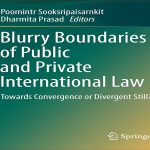
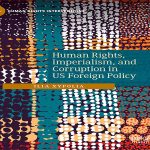
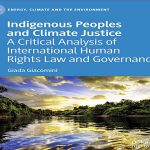
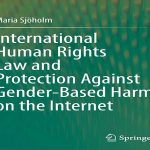

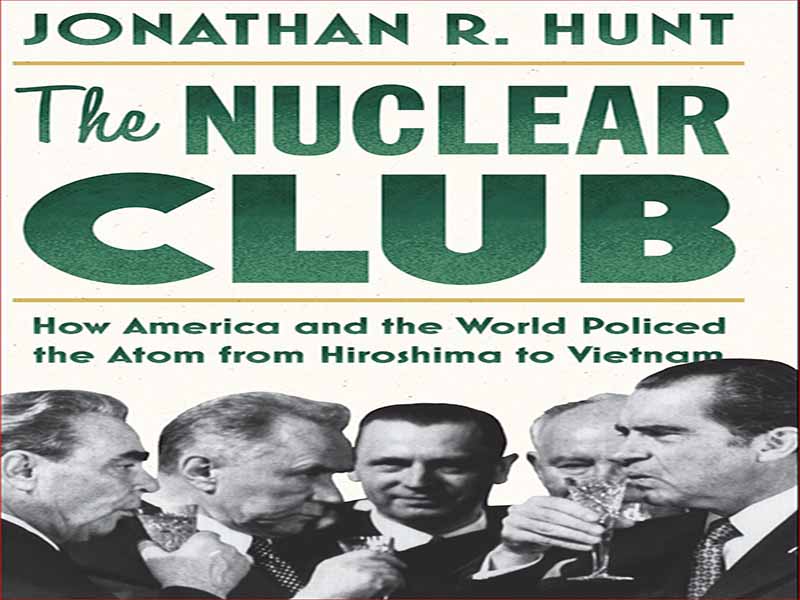


















نظرات کاربران